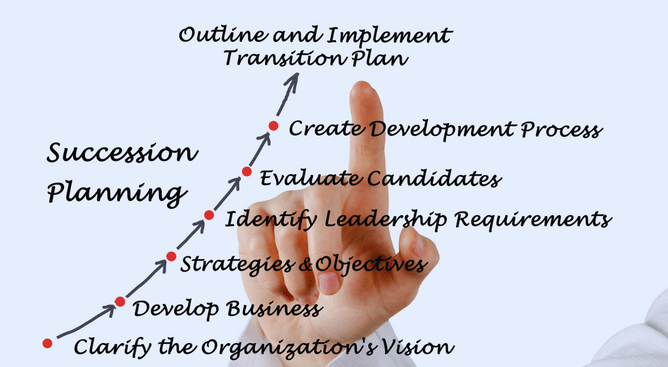Having made ourselves familiar with our initial blog 'Why is Succession Planning important?', this second blog delves deeper. What are the potential hurdles to implementation? Why can organisations be reticent to put a plan in place?
Then, once those hurdles have been overcome, we’ll discuss which characteristics are shared by the more effective Succession Plans?
Contrary to common belief, Succession Plans are (if not more) important for smaller organisations. Arguably, with skills and knowledge held by perhaps one or two people, farming out capabilities is even more critical to the ongoing success of the business.
Hurdles to overcome to make your Succession Plan successful
Whatever the workplace environment, resistance to change will vary from one organisation to another. Some individuals will see the sharing of knowledge as somehow a threat to their position in the company and as a result, will obstruct the transfer of skills and knowledge.
We’ve put together a number of obstacles which may need to be overcome - be prepared for some (if not all) of these:
1. Change averse culture is a blocker
Succession planning does not require a ‘big-bang’ approach and can focus on one area of the business initially to assuage concerns. Stress the importance of reacting to current skills labour shortage and why it’s important to develop the internal talent pool.
2. Management scepticism
Negativity can come from various sources, but if those with influence are doubting the need for succession planning, it may be an uphill struggle to roll out the strategy effectively. The benefits - such as knowledge sharing (not hoarding), mitigating a loss in productivity (should key personnel leave unexpectedly), reducing recruitment costs and promoting sustainability should be reason enough.
Arguably, the process may require managers to relinquish their top talent and this could lead to conflict. The message to managers is that succession planning is about the organisation as a whole retaining its talent and developing a personal development culture which makes the business attractive to new employees. Ensure managers who excel in developing their team members are recognised for having this skill.
3. Time spent vs. time invested
A common thread when change is being introduced. Counteract the argument that teams don’t have enough time to implement a Succession Plan by highlighting the time in recruitment, selection, training and management of new employees, as well as the time it takes to become familiar with the role once in situ.
What makes a Succession Plan effective?
Let’s spend some time looking at what distinguishes a good plan from an average one?
What elements should be included?
1. Gain the participation of the Executive
Sounds obvious? But what if there are barriers to the exchange of information? A plan will only work if there’s a culture shift towards encouraging a learning mindset across the organisation.
2. Ensure the plan fits with business strategy
Regardless of the departments earmarked for inclusion, the plan must work effectively alongside current business processes, procedures and schedules.
3. Apply various techniques for learning
We all respond in different ways to learning methodologies so it’s good practice to mix and match approaches. This could include job enrichment, shadowing, traditional classroom training, coaching or evaluating organisations with a similar profile.
4. Include succession planning in performance management
Targets and goals can easily be included in the performance management cycle. This will embed the plan into the workplace culture and gain employee ‘buy-in’ to the approach.
It’s important to differentiate between succession planning (knowledge and skills transference) as opposed to fast-tracking where individuals are identified to follow specific career paths.
5. Understanding specific position attributes
A good Succession Plan will ultimately depend upon the job analysis undertaken in the planning stage. Jobs deemed important must score highly in terms of:
- Task variety
- Degree of specialisation
- Significance/importance of the job
- Degree of autonomy
- Sphere of influence
- Independence and interdependence on other roles
6. Bring longevity to the Succession Plan
Naturally, since the plan is now aligned to your business objectives, the theory is that it will be there for the long-term.
Assume a comprehensive plan will take 1-3 years to implement. Build into this an assessment of which skills and competences will be required in the future and combine this with an evaluation of the systems which can be put in place to reduce the learning curve.
7. Instil the concept of preparation and not pre-selection
Having all knowledge resting with one or two key individuals leaves organisations vulnerable and less resilient to changes in personnel. Particularly relevant to businesses today. Emphasise to both employees and executives the Succession Plan is a means to ‘farm’ knowledge, skills and capabilities.
8. Widen the scope for candidates
Potential candidates for succession planning may come from a source outside
the department earmarked for ‘farming’. Hence why building planning into the performance management cycle may identify good candidates for upskilling/skill transference.
Look for individuals with these attributes:
- Ability to cope with change
- An interest in developing new skills
- Able to cope with a degree of uncertainty
- Demonstrates a willingness to work in different environments and with different personnel
Addressing the skills gap, talent scarcity and pending retirement
As we’ve seen in our discussion of succession planning, if implemented well, it can be the answer to the current competition for talent. Not only can a Succession Plan address the skills scarcity but can also tackle the issue of the increasing retirement of the baby boomer generation. Harvesting knowledge and capability could be the difference between a thriving business and one which is barely getting by.
Not only do key positions get the benefit from succession planning. Job needs and the analysis undertaken can identify skills gaps in other parts of the organisation and develop better training and development programmes across the board.
And if you’re looking for additional ways to motivate your employees, what better way than to visibly invest in their learning and development and to actively seek to boost their skills and competences. Just bear in mind that we're not talking about pre-selection; the success of any plan - not just a Succession Plan lies in the preparation.
How can Q&A People Matter help you?
Do you need advice setting up your organisation's Succession Plan or advice concerning other HR-related matters?
Contact us - we're here to help you.








